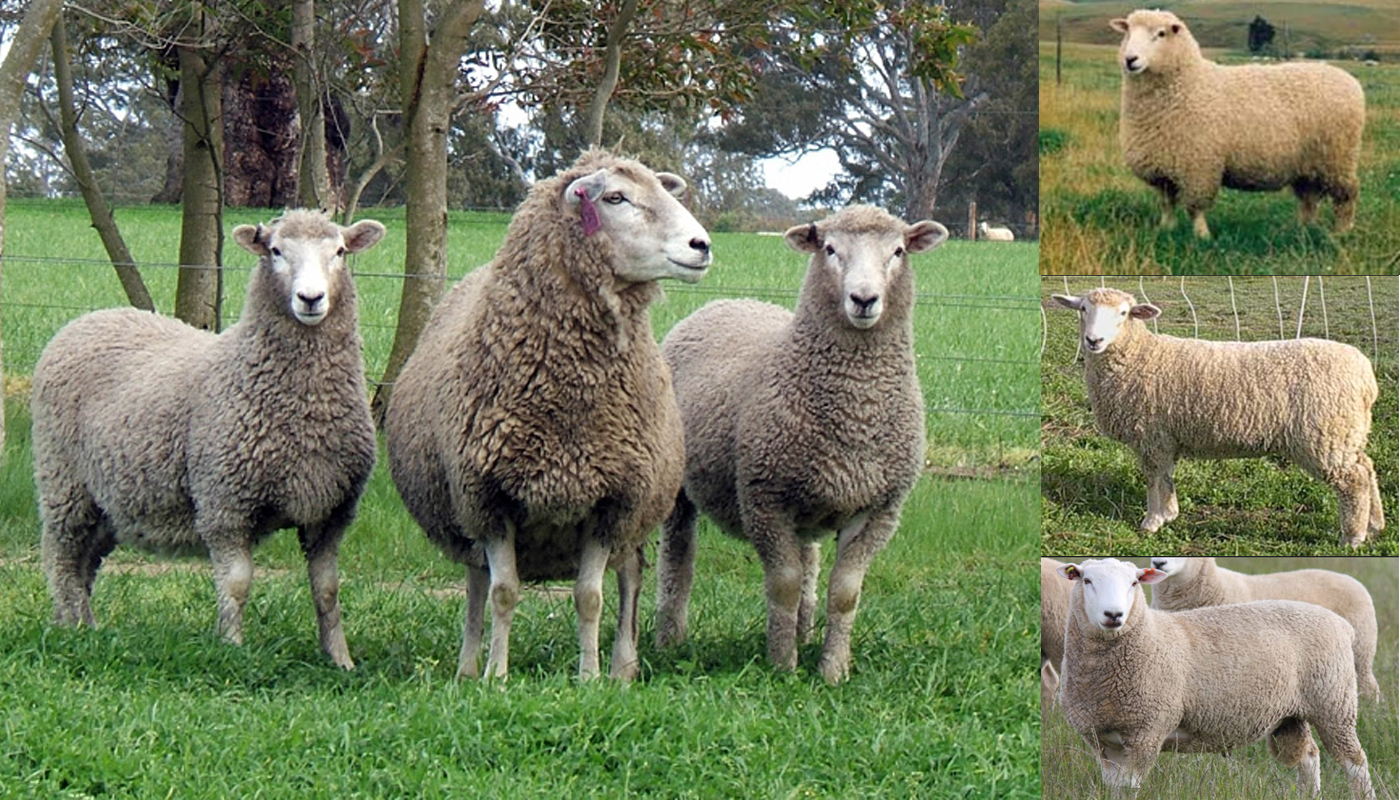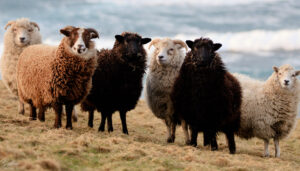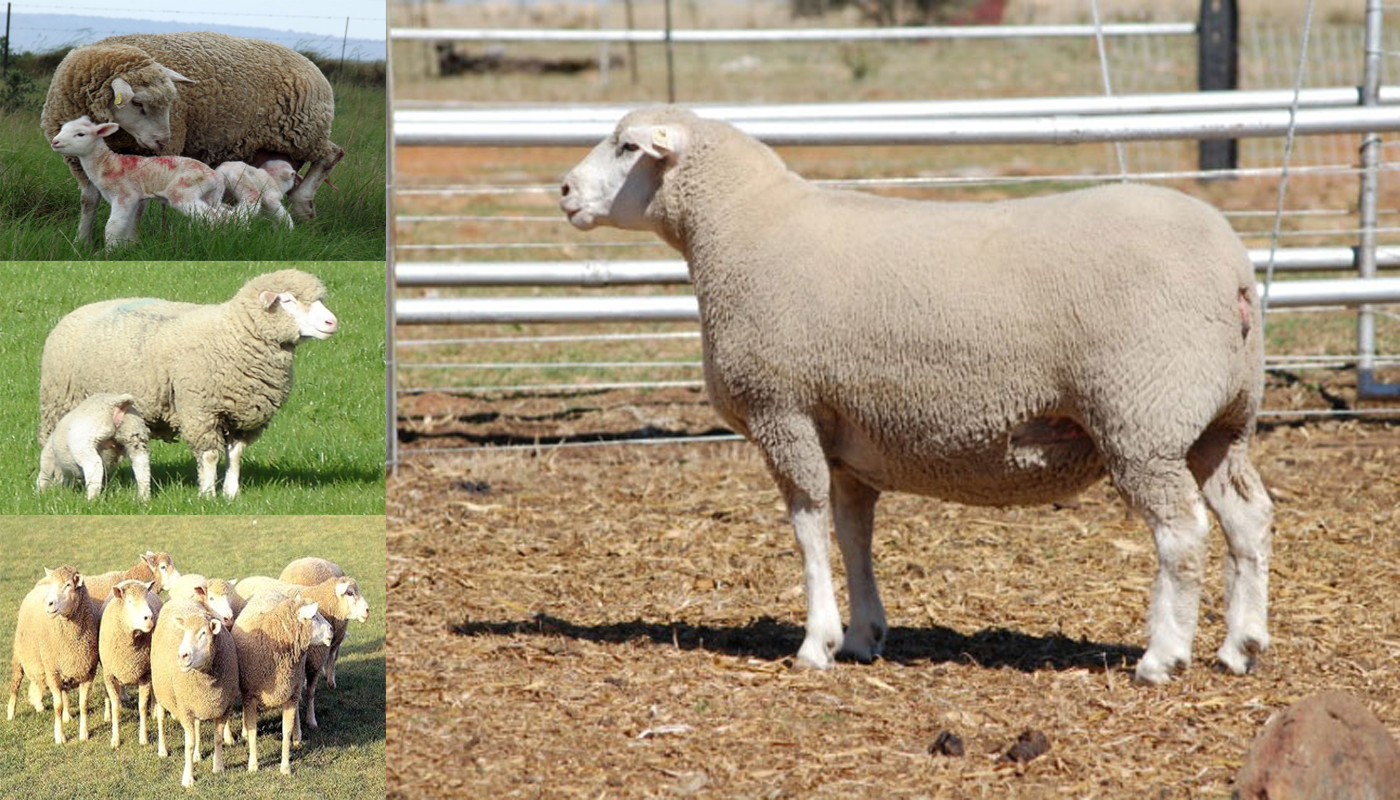
The Shetland Sheep originate from the Shetland Islands in Scotland. They are very hardy small breed of sheep that have developed the ability to survive harsh conditions. They are highly adaptive, prolific and offer soft succulent meat and a myriad of colorful fine quality wool.
SHETLAND SHEEP QUICK PROFILE OVERVIEW |
|
|---|---|
| Classified as an un-improved primitive breed they are calm, docile and produce quality wool and succulent meat. | |
| Country of Origin: | Scotland |
| Other Names: | None |
| Breed Size: | Small |
| Main Purpose: | Meat, wool and conservation grazing |
| Can be used for | Breed, **LSC, Meat, Wool |
| Temperament: | Calm and docile |
| Ideal Climate: | Heat, Cold, Most climates |
| Conservation Status: |
Listed by the *ALC Status/Rarity: Recovering |
| Health Issues? | No known health issues |
| Good Starter Sheep? | Novice to intermediate sheep farmer/keeper level |
| Sheep Associations: | American Shetland Sheep Breeders Association and The Shetland Sheep Society |
| Sheep Clubs: | Please refer to the American Shetland Sheep Breeders Association and The Shetland Sheep Society for more information |
| Note: *ALC stands for American Livestock Conservancy ** LSC stands for Landscape Management – the animal is used for controlling various vegetation growth |
|
PHYSICAL CHARACTERISTICS |
||||||||||||||||||||||||||||||||
|---|---|---|---|---|---|---|---|---|---|---|---|---|---|---|---|---|---|---|---|---|---|---|---|---|---|---|---|---|---|---|---|---|
| The Shetland Sheep breed are very hardy that a small-boned sheep with a wooly fleece and a clean mostly black face and legs. They do tend to have a cap of wool on their heads and wooly side-burns on their cheeks. | ||||||||||||||||||||||||||||||||
| Color(s): |
There are 12 recognized colors: White, Moorit (a reddish to fawn color), Black, Dark brown, Emsket (bluish grey), Fawn, Grey, Light Grey, Mioget (yellowish brown), Musket (pale greyish brown), Shaela 1 (dark grey) and Shaela 2 They have over 30 recognized marking patterns. You can find the different recognized marking by clicking here. |
|||||||||||||||||||||||||||||||
|
||||||||||||||||||||||||||||||||
EWE BREEDING & MILKING INFORMATION |
|
|---|---|
| The ewes breed once a year and mostly produce enough milk to wean their lambs. They are highly prolific with around 160% prolificacy. They are heavy milkers and mature mothers can raise triplets. Intervention is rarely required in the lambing process. | |
| Breeding Period/cycle: | Usually lasts 24 to 36 hours |
| Estrous cycle: | Ave. 17 days/13 to 19 days |
| Gestation Period: | Usually, around 150 to 155 days but most gestation is 152 days |
| No. Lambs/Litter: | 1 or 2 (twins) and the mature ewes have known to have triplets |
| Lactation Period: | Usually, around 150 to 240 day but most are milked for 180 days |
| Milking From: | 4 to 6 weeks after lambing |
| Milk Quality: | Good |
| Milk Ideal for: | Lambs |
| You may Also Like: | 10 Best Sheep Breeds for Milk |
SHEEP MEAT PRODUCTION INFORMATION |
|||||||
|---|---|---|---|---|---|---|---|
| The Shetland sheep breed are historically known for producing delicious mutton of a high quality and outstanding flavor. They meat has a fine texture and far leaner than other breeds as the sheep tends to not store their fat solely around their muscle but rather more around their organs. The lamb of a Shetland just under one year of age is around 12 to 17 kg and has a delicate flavor that can be used for fast preparation as it does not need to have much added flavors or spices. The Hogget, which are aged at around 1 to 2 years of age get weights of between 16 to 20 kgs and the Hogget tends to be able to be cooked as you would the lamb only it tends to be a lot more flavorsome. Shetland mutton is delicious and of a superior quality especially if slow cooked having been marinated. The Shetland breed has a high meat to bone ratio and hardly any wastage. |
|||||||
| Meat Production: | Yes, Quality: Excellent | ||||||
|
|||||||
| You may Also Like: | 11 Best Sheep Breeds for Meat Production | ||||||
SHEEP WOOL PRODUCTION INFORMATION |
||||||||||||||||
|---|---|---|---|---|---|---|---|---|---|---|---|---|---|---|---|---|
| Historically the wool produced by the Shetland sheep breed has been of high value and a great commodity to the sheep owners. The sheep have fleece of numbers colors of sheep wool and were once really important to the wool industry as most of their fleece did not need to be dyed. Tweed is produced from the coarse wool of the Shetland sheep. They are also known for their multi-colored knitwear and made using Fair Isle knitting and also the traditional knitted fine lace shawls. Said to be so fine that they could pass through a wedding ring. The Shetlands wool production gained “protected geographical status” with a “protected against origin” classification as “Native Shetland Wool” in November 2011. This was the first non-food product in the Britain to obtain this status. The Shetland sheds its fleece in the spring and this is when the fleece is either plucked or rooed by hand. | ||||||||||||||||
| Wool Production? | Yes, Quality: Spinning count of 50s to 60s | |||||||||||||||
| Wool is used to Produce: | Knitted garments, clothes, scarves and fine lace shawls. | |||||||||||||||
|
||||||||||||||||
| You may Also Like: | 18 Best Wool Producing Sheep Breeds | |||||||||||||||
SHEEP SKIN PRODUCTION INFORMATION |
|||||||
|---|---|---|---|---|---|---|---|
| They are not primarily bred for their sheep skin production. Although their skin is or has at some time been used for the production of some form of sheep skin product such as chamois, etc. | |||||||
| Skin Production? | N/A | ||||||
| Skin is used to Produce: | Kid skin leather products such as shoes, car seats, fine leather coats, gloves, etc. Chamois cloths, leather goods such as seats, shoes and other garments and leather materials such as furniture, etc. |
||||||
|
|||||||
GOOD TO KNOW ABOUT THE ROMNEY SHEEP |
|
|---|---|
| A few more interesting facts to know about the breed | |
| Child-Friendly? | No livestock should be left unattended around unsupervised children |
| Landscape Management? | They are very good at landscape management as they are used in conservation management programs. |
| Where to buy them? | Please refer to the American Shetland Sheep Breeders Association and The Shetland Sheep Society for more information |
| General Information: | The Shetland Sheep breed are primarily kept these days for their ability to survive on land that would otherwise be deemed useless as it is infertile.
Shetland sheep have survived for centuries in the most difficult conditions and on a very poor diet usually on land that is infertile. Other than the four horned ram owned by Thomas Jefferson they are rather docile and friendly in nature. |
HISTORY
Sheep in the British Ilse, wester and northern Europe were small, short-tailed and only the rams were horned right up until the Iron Age and were variable in color.
Slowly the short-tailed sheep were being replaced by long-tailed sheep and this left short-tailed sheep in areas that were not too accessible.
These short-tailed sheep included breeds like the Scottish Dunface sheep that was once a prominent breed of sheep in Scotland. In the late 19th century the Dunface sheep breed became extinct leaving behind only traces of its lineage in the breeds it played a part in of developing. The Shetland is a type of Dunface sheep breed and has been regarded as a distinct breed since the early 19th century.
The Shetland Flock Book Society was formed in 1927 to protect and encourage the population numbers of a fast-becoming extinct Shetland breed. To this day the Shetland Flack Book Society remains responsible for the collection of data and registry of the Shetland breed in the Shetlands.
In the 1970’s when the Rare Breeds Survival Trust was set up the Sheltland sheep breeds number had declined so badly that the Rare Breeds Survival Trust set then as a Category 2 which is an endangered species.
Since they have become involved the breeds numbers have increased nicely and enough for them to be taken off the watch list and is listed as a Category 6 which is listed as “other native breeds”. There is a population in the UK of the Shetland breed of around 3000 or so.
The first Shetland ram in America was first kept at the White House by President Thomas Jefferson. The ram had four horns and showed an unusual aggression as it attacked several people in the spring of 1808 who had taken short cuts across the square. A few were seriously injured with one fatality a young small boy.
After the incident the ram was moved to Monticello which was Thomas Jefferson’s privates estate. But the ram attacked and killed several other rams and was eventually killed. Thomas Jefferson dubbed the ram “this abominable animal”!
The original flock of Shetlands of Thomas Jefferson died out and other importations of Shetland sheep was made around the country from Scotland.
But most of these sheep did not survive either and after some failed attempts at the importation of the Shetland Sheep, in 1921 it was deemed that Shetland sheep could not survive and there could not be imported to the United States.
In the mid-20th century some Shetlands were imported into Canada and these were fine, hardy and seemed to thrive. Some sheep were then imported from Canada into the US in the 1980’s it was around this time that the American Shetland Sheep Registry was established.
Video
USEFUL LINKS
- United States Lamb Resource Center
- American Sheep Industry Association
- American Sheep Industry Association List of Breed Associations & Standards
- American Milk Sheep Association
- Dairy Sheep Association of North America
- American Wool Council
- Fur Commission USA
- North American Meat Institute
- American Lamb Board
- National Lamb Feeders Association
- American Livestock Conservancy
- Animal Shelter (ASPCA)
- American Veterinary Medical Association
- American Animal Welfare Society
- American Animal Control
- American Animal Husbandry Society
- United States Department of Agriculture
 11 Best Sheep Breeds for Meat Production
11 Best Sheep Breeds for Meat Production Top 20 Best Native British Sheep Breeds
Top 20 Best Native British Sheep Breeds Texel Sheep Breed – Everything You Need to Know
Texel Sheep Breed – Everything You Need to Know Polypay Sheep Breed – Everything You Need to Know
Polypay Sheep Breed – Everything You Need to Know Teeswater Sheep Breed – Everything You Need to Know
Teeswater Sheep Breed – Everything You Need to Know Romney Sheep Breed – Everything You Need to Know
Romney Sheep Breed – Everything You Need to Know Coopworth Sheep Breed – Everything You Need to Know
Coopworth Sheep Breed – Everything You Need to Know Badger Face Welsh Mountain Sheep Breed – Everything You Need to Know
Badger Face Welsh Mountain Sheep Breed – Everything You Need to Know Scottish Blackface Sheep Breed – Everything You Need to Know
Scottish Blackface Sheep Breed – Everything You Need to Know Discover Sheep Breed Diversity: A Comprehensive Guide
Discover Sheep Breed Diversity: A Comprehensive Guide Lincoln Sheep Breed – Everything You Need to Know
Lincoln Sheep Breed – Everything You Need to Know Ile-de-France Sheep Breed – Everything You Need to Know
Ile-de-France Sheep Breed – Everything You Need to Know